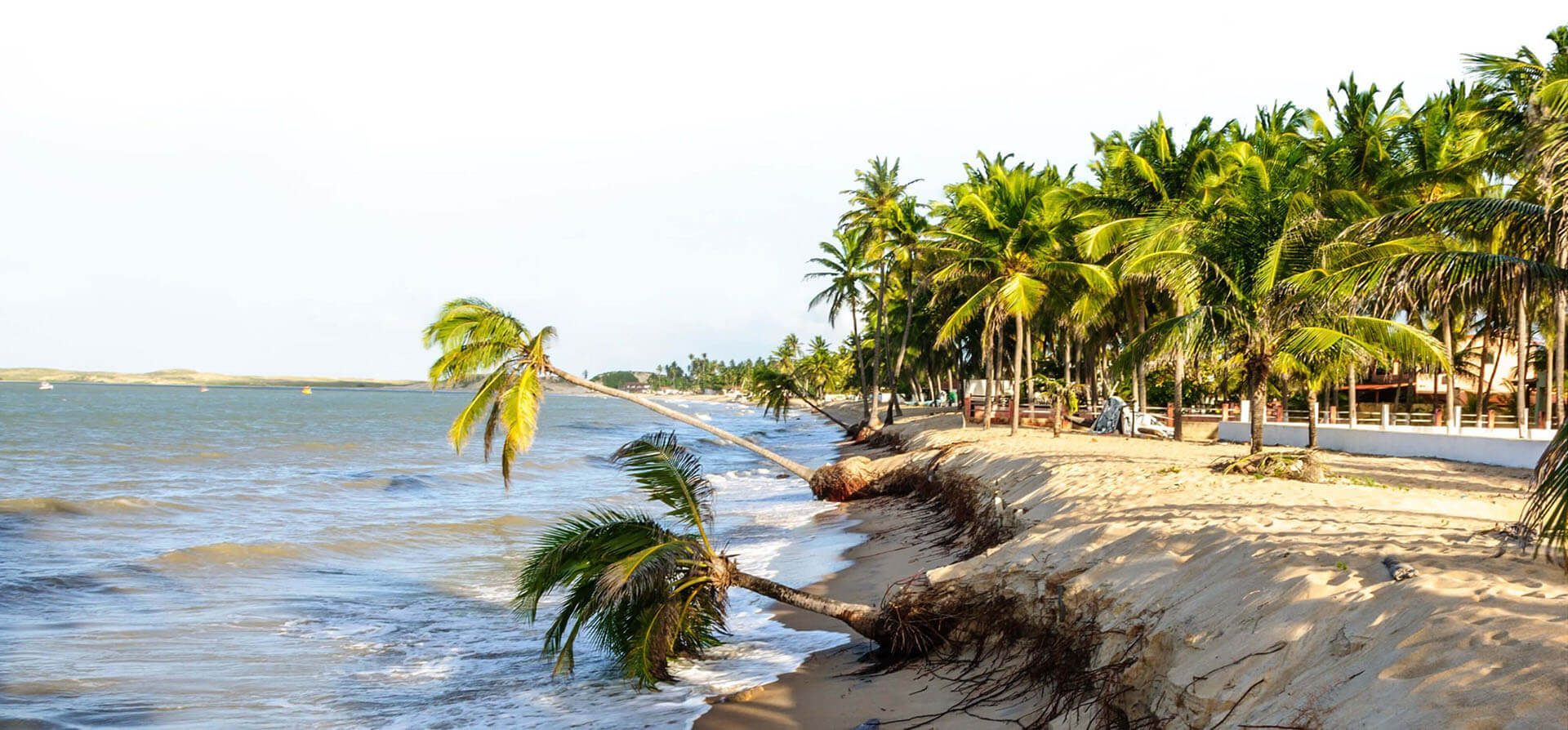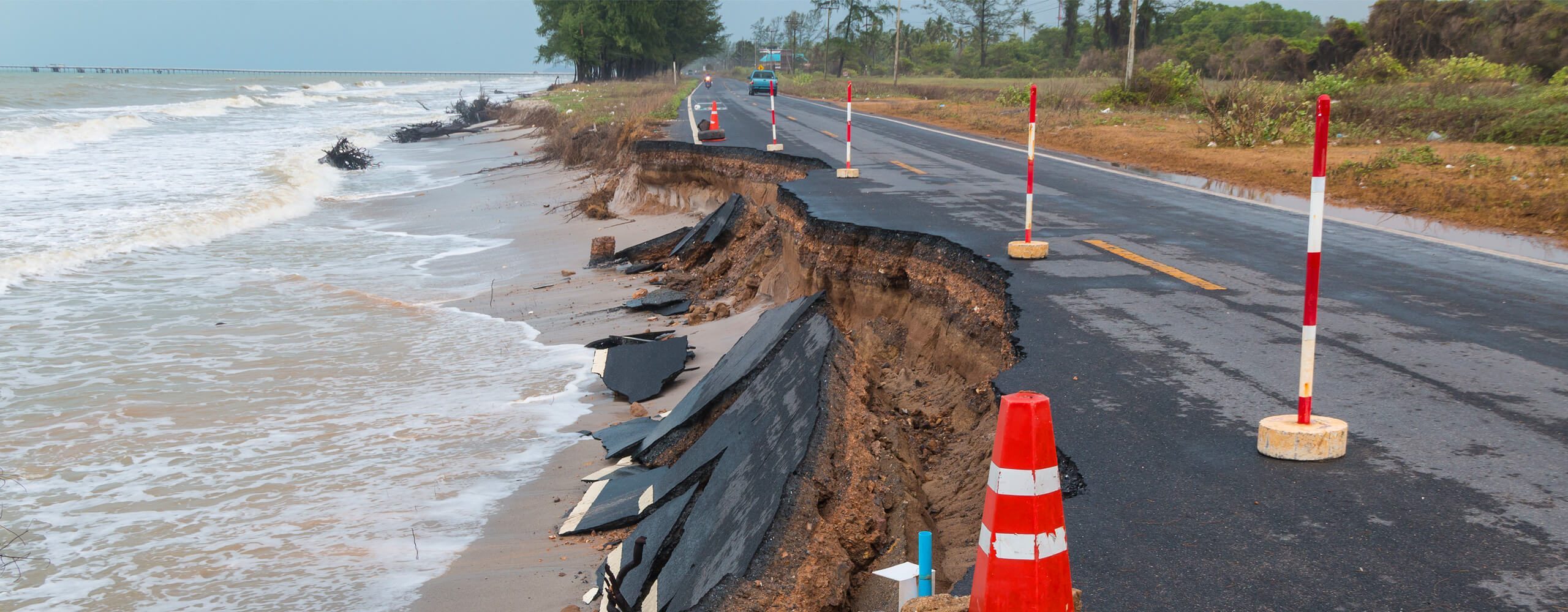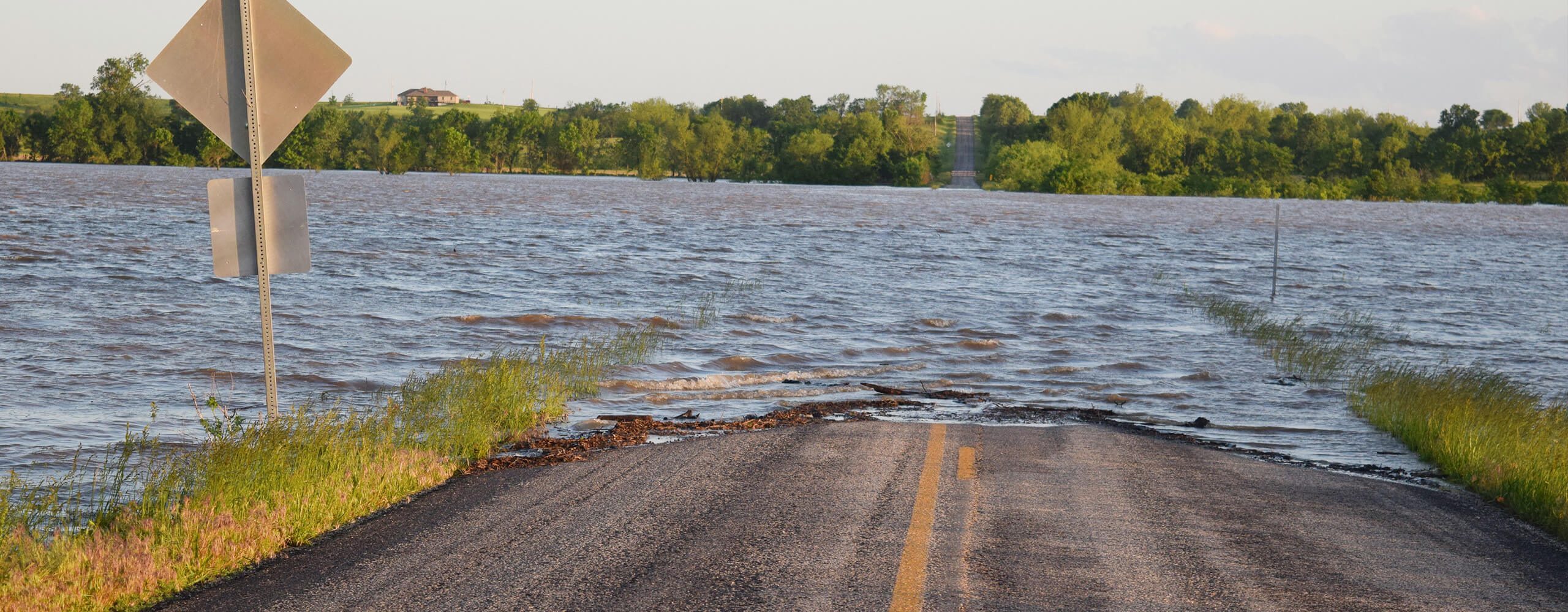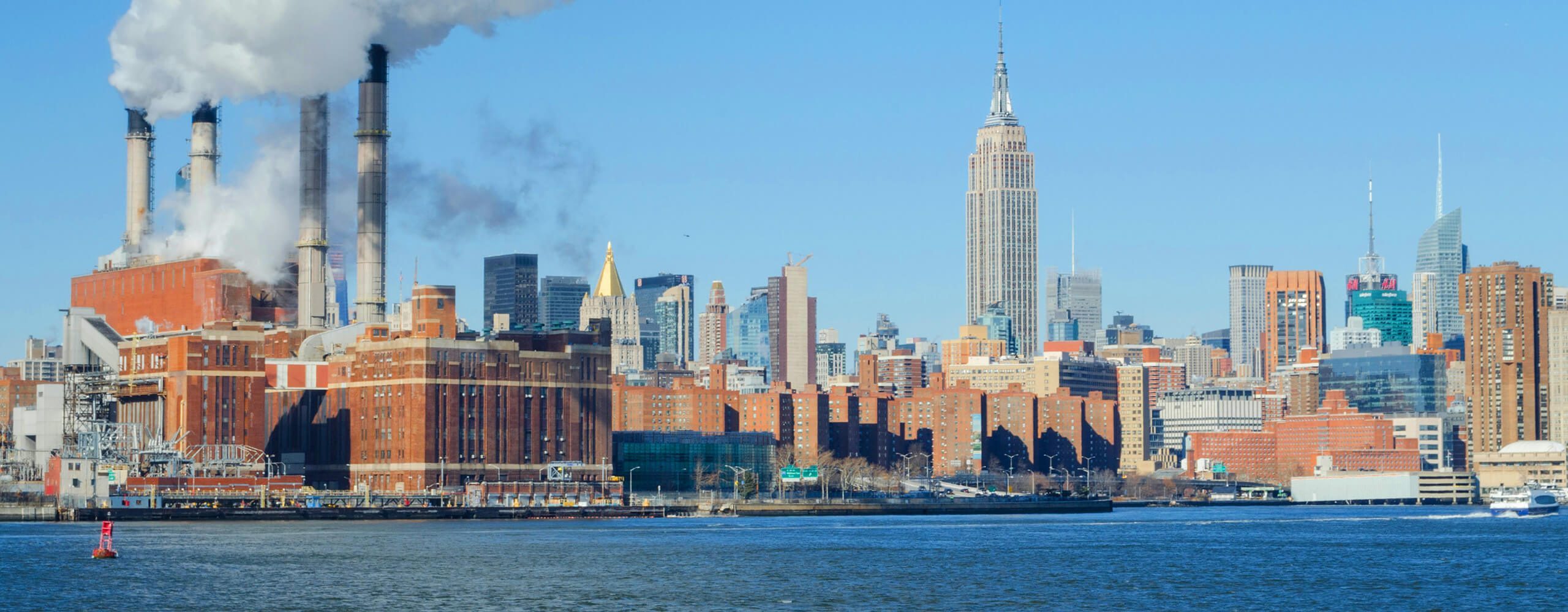Coastal Threats
Increased flooding, sea level rise and human manipulation of waterways via dams, diversions, levees, and other man-made infrastructure has resulted in the loss of tens of thousands of acres of estuary habitat every year.

Climate Change
Sea level rise
Scientists expect seas to rise at least one foot by the year 2050 and two feet by the end of the century. Moderate coastal flooding from rising seas will be at least 10x more frequent and flooding from major storms will cause water to intrude further inland and cause increased erosion, damage to infrastructure, and loss of life and property.
Settling along the coasts provides strategic opportunities for trade, travel, and security so it is no surprise eight of the ten largest U.S. cities, are all situated in estuary regions. This strategic opportunity is quickly changing into a climate, with entire cities like Miami, FL expected to be under water by the end of the century without drastic mitigation and adaptation efforts.
We aren’t just experiencing the effects of rising seas during extreme weather events, either. High tide flooding, also known as sunny day flooding or nuisance flooding, has increased between 400-1,100% since 2000 in the Southeast and Gulf Coast. Looking ahead, NOAA expects between 25-75 days per year of sunny day flooding depending on location.

Excessive groundwater pumping and sea level rise are also the main causes of saltwater intrusion. As seas rise and lingering droughts limit freshwater flow downstream, saltwater stretches further inland, increasing salinity and potentially causing damage to drinking water supplies for millions of Americans. Additionally, this intrusion may cause disturbance to critical habitat that cannot withstand elevated levels of saltwater influence.
Climate change is no longer a looming threat of the future, it is actively happening now and impacting Americans everywhere. In 2020, 65% of Americans acknowledged climate change is happening and is affecting their communities, according to a Pew Research Center poll; the highest percentage since the poll began. Fishing seasons are being cut short or not happening at all due to drought and floods. Sunny day flooding is turning away tourists. The time to act on climate is now.
Climate change is no longer a looming threat of the future, it is actively happening now and impacting Americans everywhere.
Increased Regularity and Intensity of Storms
In 2021, the United States experienced 20 separate $1 billion climate related disasters totaling $145 billion in damage – including Hurricane Ida which accounted for $75 billion alone and three additional tropical storms that accounted for more than half of the total price tag. Unfortunately, this is not an outlier. Between 2011-21, every year except 2014 experienced 10 or more separate $1 billion disasters compared to only two years from 1980-2010. Major storm events since 2017 have cost taxpayers on average $148 billion and resulted in more than 900 lives lost.

Coastal Land Loss

Increased flooding, sea level rise and human manipulation of waterways via dams, diversions, levees, and other man-made infrastructure has resulted in the loss of tens of thousands of acres of estuary habitat every year. Coastal wetlands rely on consistent flow of new sediment to replenish shorelines and altering the natural flow of water deprives these areas of nutrient rich soil. Coastal land loss is a natural occurrence, however, the rate at which wetlands are currently disappearing is not. Coastal land loss also threatens to displace and disenfranchise entire communities, with the hardest impacts coming to traditionally marginalized and communities of color.
Pollution
Stormwater Runoff
Storm Stormwater runoff carries a multitude of contaminants, including phosphates and nitrates, from sewage, animal waste, and fertilizers into nearby streams. These contaminants and chemicals drain into the estuary, polluting bays, and degrading habitats. Stormwater runoff is especially prevalent in urban estuaries.

Eutrophication
Excess nutrients from agricultural and industrial activities can lead to the growth of algae on the surface of the water, also known as eutrophication. Warming waters with high carbon dioxide content also provide ideal conditions for algal blooms, while increased nutrient runoff from altered rainfall patterns feeds the algae. Eutrophication decreases the light and oxygen and threatens keystone estuary species that rely on submerged aquatic vegetation for food and shelter, such as manatees and crabs.
Industrial Pollution

Toxic substances, including chemicals and heavy metals, can enter estuaries through industrial discharges and stormwater runoff. Many of these substances are poisonous, carcinogenic (cancer-causing), or otherwise dangerous. As they are consumed by plants and animals, they accumulate in the tissues of living things. As the toxins travel up the food chain, they become more harmful for organisms at the top of the food chain, including humans.
Human Impact
Population Growth in Coastal Watersheds
Estuaries account for just 4% of the continental U.S. land mass but are home to 40% of the population. Cities like New York, Houston, Miami, and San Francisco are all situated within an estuary. While the development along estuaries has revolutionized the way we do business globally, strengthened national security, and provides tens of millions of jobs, it has come at the cost of natural infrastructure that would otherwise protect us from storms and provide habitat for native fish and wildlife.
Estuaries account for just 4% of the continental U.S. land mass but are home to 40% of the population.
Dredging
The removal of sediment and other natural materials from the bottoms of bodies of water prevents the natural buildup of sediment in channels and harbors and causes sediment particles to flow into an estuary at an unnatural rate, making the waters murky and unhealthy. Increased sedimentation can result in a reduced amount of nutrients flowing to wetlands making the environment unsuitable for plant and animal life. Though dredging is essential to the process of waterway transportation, its effects can be detrimental to coastal estuarine habitats.
Invasive Species
Many invasive species are introduced to estuaries accidentally, either through transportation or human introduction. Invasive species compete with and/or prey upon native species, reducing their populations and removing critical services from the fragile ecosystem.
Over Harvesting
Overharvesting refers to catching a species, like fish, oysters or crabs, faster than they can naturally replenish. Removing any one species can alter the entire ecosystem and have devastating effects. For example, the oyster population of the Chesapeake Bay was nearly wiped out due to overharvesting. Because oysters serve as water filters within the Bay, many other organisms were also put at risk as harmful pollutants remained in the water.
Oil and Gas Drilling
The drilling for oil and gas, especially in the Gulf of Mexico, is becoming an increasingly concerning problem for our nation’s estuaries. The BP oil spill in 2010 was one of the most catastrophic human-caused disasters in history. According to the National Wildlife Federation, as many as 8,000 birds, sea turtles, mammals, and other species were found injured or dead in the first six months of the oil spill. Nearly a decade later, oil from this spill is still causing detrimental effects to the salt marshes of the Gulf Coast. While there has been some progress, the more heavily impacted salt marshes will still take many years to recover.
Solutions
Equitable and just restoration of our nation’s bays and estuaries is our primary defense against the threats from a changing climate and human-caused degradation of our environment. Restoration comes in two forms: 1) the physical restoration of our coasts using nature-based solutions rooted in science and technology and 2) the equitable distribution of resources, funding, and technical expertise to marginalized communities. We cannot have one without the other.
According to a FEMA report, every $1 spent on mitigation saves $4 in recovery spending. It can be difficult to convince decision makers to spend money on mitigation for things that might happen in the future, such as storms or drought. Luckily, coastal restoration often comes with a multitude of benefits and can be funded through many different outlets. Additionally, 68% of American’s, and a bipartisan coalition of Congress, support natural infrastructure restoration, per a Center for American Progress study.
Policy
RAE has been a leading voice for the advancement of estuary restoration and protection in Washington, D.C. since our founding in 1995. We work closely with members of Congress, federal agencies, and private and nonprofit organizations to advance science first solutions to our nation’s largest coastal threats.
Working closely with the Congressional Estuary Caucus, we have made legislative strides on issues such as nature-based infrastructure at Army Corps of Engineers, advancing blue carbon science at NOAA, and expanding the Coastal Program at U.S. Fish and Wildlife Service.

Collaboration
We believe that the best way to achieve shared success in restoration is through partnerships and cohesive strategy. Recognizing that we do not have all the answers, Restore America’s Estuaries has built an expansive network of restoration professionals, policy makers, organizations, and experts from across the world to advance the science and policy needed to ensure a healthy future for our coasts for all members of our coastal community.
RAE also hosts multiple events, including the RAE Coastal & Estuarine Summit, the Living Shorelines Workshop, and our Coastal Resilience Webinar Series.



